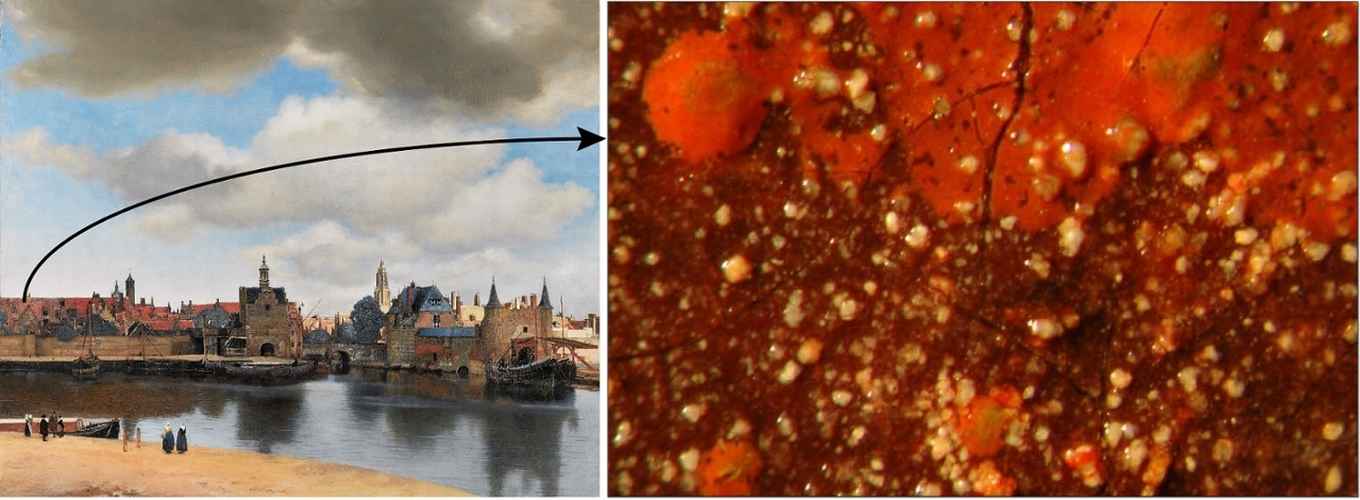Metal soaps critical in speed of deterioration of oil paintings
26 April 2017

Paint can fade, varnish can discolour and paintings can collect dust and dirt. Joen Hermans has examined the chemical processes behind ageing processes in paints. ‘While restorers do their best to repair any damages that have occurred, the fact remains that at present we do not know enough about the molecular structure of ageing oil paint and the chemical processes they undergo’, says Hermans. ‘This makes it difficult to predict with confidence how paints will react to restoration treatments or to changes in a painting’s environment.’
Visible to the naked eye
Hermans explains that in its simplest form, oil paint is a mixture of pigment and drying oil, which forms the binding element. Colour pigments are often metal salts. ‘When the pigment and the drying oil are combined, an incredibly complicated chemical process begins’, says Hermans, ‘which continues for centuries’. The fatty acids in the oil form a polymer network when exposed to oxygen in the air. Meanwhile, metal ions react with the oil on the surface of the grains of pigment.
‘A common problem when conserving oil paintings is the formation of what are known as metal soaps’, Hermans continues. These are compounds of metal ions and fatty acids. The formation of metal soaps is linked to various ways in which paint deteriorates, as when it becomes increasingly brittle, transparent or forms a crust on the paint surface. Hermans: ‘You can see clumps of metal soap with the naked eye on some paintings, like Rembrandt’s Anatomy Lesson of Dr Nicolaes Tulp or Vermeer’s View of Delft’. Around 70 per cent of all oil paintings show signs of metal soap formation.’
Conserving valuable paintings
Hermans has studied in detail how metal soaps form. He began by defining the structure of metal soaps. One of the things he discovered was that the process that causes metal ions to move in the painting is crucial to the speed at which the painting ages. Hermans also managed to recreate the molecular structure of old oil paints, making it possible to simulate and study the behaviour of old paints without actually having to remove samples from Rembrandt’s Night Watch. Hermans hopes this knowledge will contribute towards a solid foundation for the conservation of valuable works of art.
PhD details
J.J. Hermans: Metal Soaps in Oil Paint. PhD supervisor: Prof. P.D. Iedema. Co-supervisor: Dr. K. Keune.
Time and location
The ceremony is on Tuesday, 9 May at 14:00. Location: Agnietenkapel at Oudezijds Voorburgwal 231, Amsterdam.